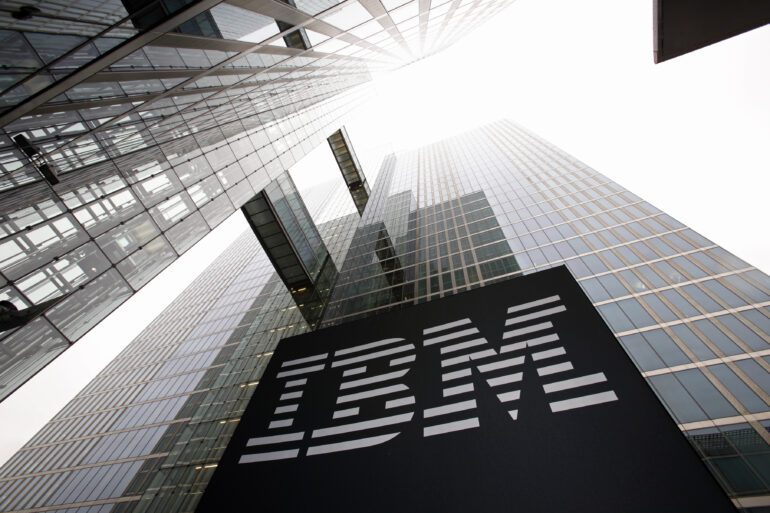TL;DR:
- IBM CEO Arvind Krishna plans to pause hiring for roles that can be replaced by artificial intelligence (AI) in the coming years.
- Back-office functions like human resources, employing around 26,000 workers, will be most affected.
- Approximately 30% of these roles could be replaced by AI and automation over a five-year period, leading to potential job losses of around 7,800.
- Attrition will play a part in reducing the workforce without immediate replacements.
- AI tools have raised concerns about disrupting the labor market, prompting IBM’s workforce strategy.
- Mundane tasks like employment verification letters will likely be fully automated, while some HR functions may remain unaffected for the next decade.
- IBM continues to hire for software development and customer-facing roles, with talent acquisition becoming easier.
- CEO Krishna has focused on reshaping IBM around software and services, divesting lower-growth businesses.
- IBM’s financial performance has exceeded profit expectations due to effective expense management, including job cuts.
- New productivity measures are expected to drive $2 billion in annual savings by 2024.
- Krishna now sees potential for a “shallow and short” recession in the US, despite IBM’s strong software portfolio.
- IBM remains committed to innovation and efficient operations in a competitive business environment.
Main AI News:
International Business Machines Corp., under the leadership of CEO Arvind Krishna, has outlined its plans to adapt to the advancing technology landscape. Krishna has stated that the company anticipates a pause in hiring for positions that could be automated through artificial intelligence (AI) in the coming years. This strategic move will primarily affect back-office functions, such as human resources, which currently employ approximately 26,000 workers.
Krishna envisions that AI and automation could replace up to 30% of these non-customer-facing roles within a five-year period, resulting in the potential loss of around 7,800 jobs. However, a portion of the reduction will be achieved through attrition without immediate replacements. This workforce strategy represents one of the most significant responses to the disruptive potential of AI, which has captured the public’s imagination with its ability to automate various tasks, from customer service to generating code.
While mundane tasks like employment verification letters and employee transfers between departments are likely to be fully automated, Krishna believes that certain HR functions, such as evaluating workforce composition and productivity, will remain unaffected for the next decade. IBM’s current workforce comprises approximately 260,000 employees, and the company will continue to hire for software development and customer-facing positions. Krishna notes that finding talent has become easier compared to a year ago. Despite the ongoing job cuts, which may amount to approximately 5,000 workers upon completion, IBM has actually increased its overall workforce by hiring around 7,000 people in the first quarter.
Since taking on the role of CEO in 2020, Krishna has been instrumental in reshaping IBM’s focus around software and services, particularly in the realm of hybrid cloud. To streamline operations, the company has divested lower-growth businesses such as the managed infrastructure unit Kyndryl Inc. and a portion of the Watson Health business. Additionally, IBM is currently exploring the possibility of selling its weather unit.
IBM’s recent financial performance has exceeded profit expectations for the last quarter due to effective expense management, including the previously announced job cuts. Chief Financial Officer James Kavanaugh anticipates that new productivity and efficiency measures will generate annual savings of $2 billion by the end of 2024. Despite worsening macroeconomic concerns, IBM’s robust software portfolio, bolstered by the acquisition of Red Hat, is expected to contribute to steady growth, according to Bloomberg Intelligence’s Anurag Rana.
Looking ahead, Krishna has revised his outlook on the US economy, now acknowledging the potential for a “shallow and short” recession towards the end of this year, contrary to his previous belief that the country could avoid such an economic downturn. However, with IBM’s strong software offerings and the inclusion of Red Hat, the company is poised to maintain its growth trajectory even amid challenging economic conditions.
Conlcusion:
IBM’s decision to pause hiring for roles that can be replaced by artificial intelligence (AI) and automation signifies a significant shift in the market. This strategic move reflects the increasing reliance on technology to streamline operations and improve efficiency. By leveraging AI and automation, companies can automate mundane tasks and enhance productivity.
However, this advancement also raises concerns about the impact on the labor market, particularly in back-office functions like human resources. As more organizations follow IBM’s lead and embrace AI-driven solutions, the market can expect to witness the further transformation and a potential shift in the demand for certain job roles. This underscores the need for individuals to adapt and acquire new skills that align with the evolving technological landscape.
Furthermore, businesses operating in the market must carefully consider the implications of automation on their workforce strategies to ensure a balanced approach that maximizes efficiency while also addressing potential job displacement challenges.

